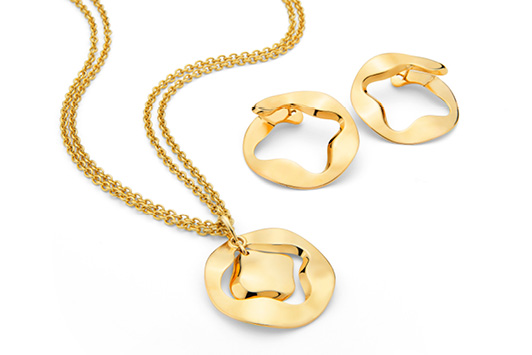
Jewelers who attended the September VicenzaOro gold-jewelry fair said the combination of a challenging economic outlook and expensive gold had impacted orders. But leading Italian jewelers insisted they would not lower standards and ruled out incorporating lower-quality diamonds into their pieces to reduce production costs.
Roberto Coin, who heads the eponymous Italian fine-jewelry brand, told
Rapaport Magazine he would never surrender quality despite the high price of gold, which traded at around six-year highs. “I have seen these cycles before. We have to maintain the high standards of our production,” he said. Coin was more concerned about the impact of the US-China trade war on the global economy and on US demand for his diamond jewelry.
Compounding the effect of the high gold price was a soft euro vis-à-vis the dollar. This has raised costs for Italian manufacturers ordering dollar-based precious materials, though weaker polished-diamond prices have helped mitigate those costs.
Getting creative with their designs
Italy, Europe’s leading exporter of gold and silver jewelry, is renowned for its highly skilled goldsmiths, with the main producing hubs located in Vicenza, Valenza and Arezzo. Italian designers are likely to create lighter-weight gold-jewelry pieces to help compensate for the high price of bullion, said local designers and manufacturers attending the show.
“The biggest problem is the continuous volatility in gold prices, which creates uncertainty. Consequently, this increase in prices has blocked orders and creates big problems in production,” explained Ivana Ciabatti, president of Italian goldsmith group Confindustria Federorafi.
Italian gold and gold-jewelry exports were up 3% year on year at EUR 1.3 billion ($1.43 billion) in the first quarter of 2019, according to state agency Istat. The increased gold price fueled the rise in outbound shipments’ value, but the volume of orders dipped, Ciabatti said.
The solution for the sector, she continued, is for goldsmiths to be more creative in their designs and to develop communications and marketing. Like Coin, she affirmed that Italian gold-jewelry manufacturers were not looking to lower quality in the face of rising costs, and were planning to maintain their reputation for creating innovative, design-led and well-made products.
Christmas shopping
VicenzaOro’s organizers were satisfied with visitor turnout. Booths were packed, and the mood appeared buoyant as retailers gathered to order the latest jewelry and watch collections for the Christmas season.
A 10% overall increase in foreign trade members helped bolster the crowd. The Middle East saw a 23% jump in numbers, while North America rose 22%, Russia and Ukraine 19%, and Asia 18%. Japan showed particular improvement at 43%. However, European visitors still make up the majority of the fair’s attendees.
Exhibiting manufacturers and designer brands took advantage of VicenzaOro’s worldwide reach. Among them was Stephen Webster, whose booth in the prestigious Hall 7 attracted significant interest.
“Vicenza is a global show. The Italians [at Vicenza] have done a great job [of reaching] out to the global market,” Webster commented in an interview in London ahead of
the show.
His brand presented three fresh collections at VicenzaOro: Vertigo, Astro Balls and his Men’s line. Vertigo pieces are crafted to create an illusion, while Astro Balls are charms celebrating the 13 Zodiac signs, blending intricately carved gold and luscious pearls. The Men’s line highlighted Webster’s focus on masculine jewelry, which he now sees as mainstream.
Nearby, award-winning London-based designer Tomasz Donocik showcased his latest pieces in the Design Room alongside established names such as Lydia Courteille and Alessio Boschi. The Paris-based Courteille presented new pieces from her La Vie en Rose collection, while Italian brand Picchiotti offered expandable bracelets and rings with exquisite natural-color gemstones. It also featured a bracelet with unheated pigeon’s-blood Mozambican rubies, and a necklace incorporating Sri Lankan (Ceylon) sapphires and white diamonds.
Pearl specialist Yoko London unveiled several carefully curated collections, as well as its Waterfall necklace of white pearls and diamonds. The brand’s booth was constantly busy, underscoring a revival in demand for pearl jewelry.
Image: antonini.itArticle from the Rapaport Magazine - November 2019. To subscribe click here.